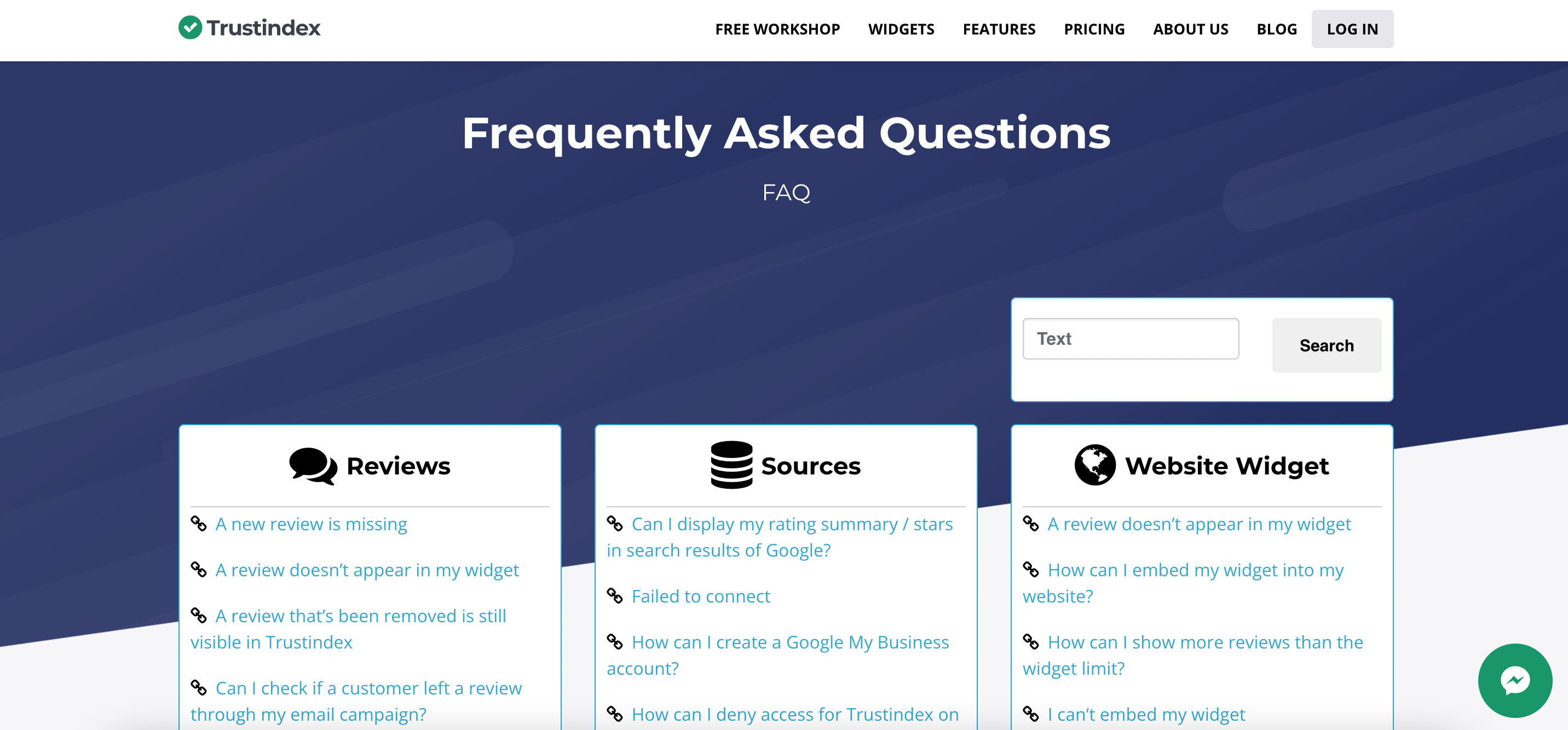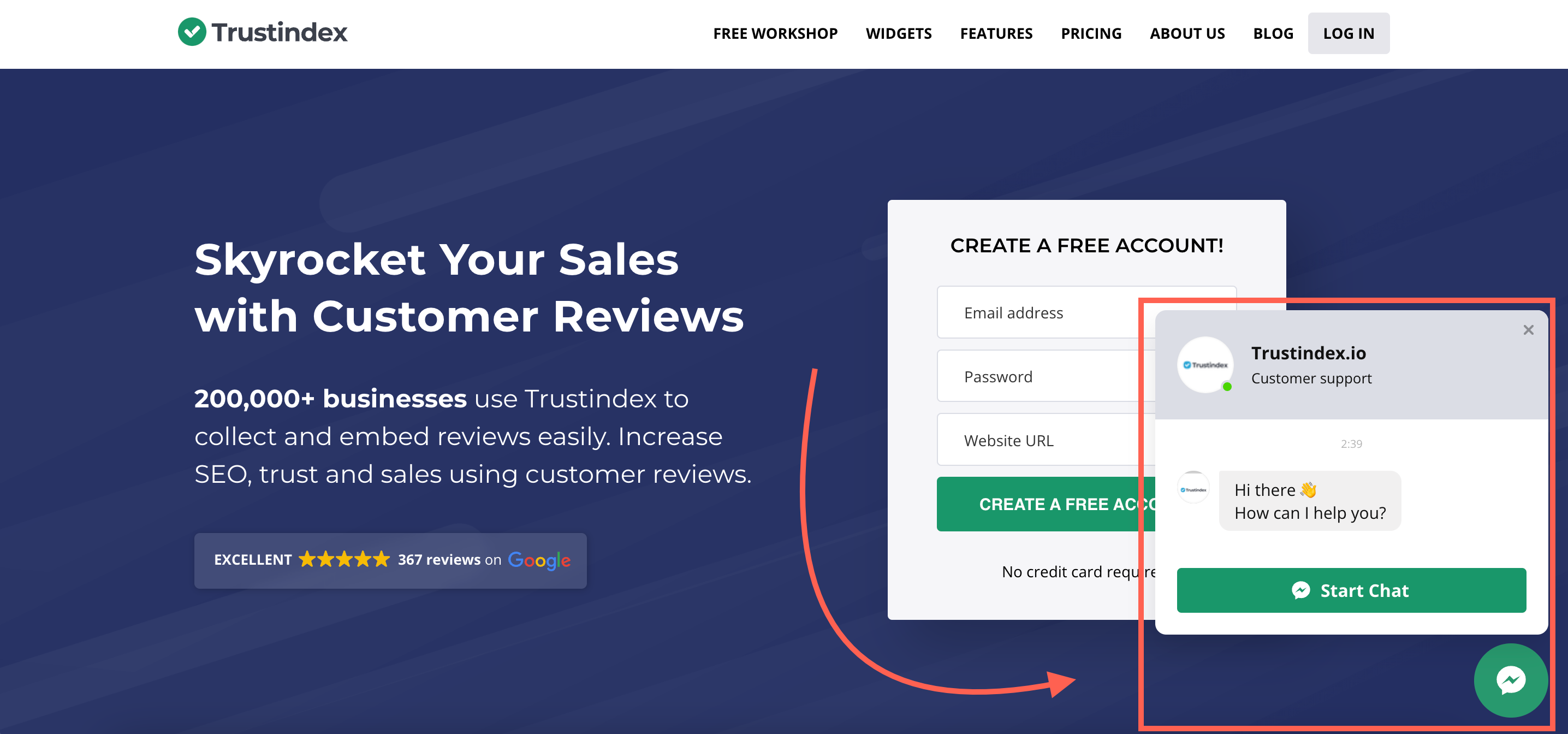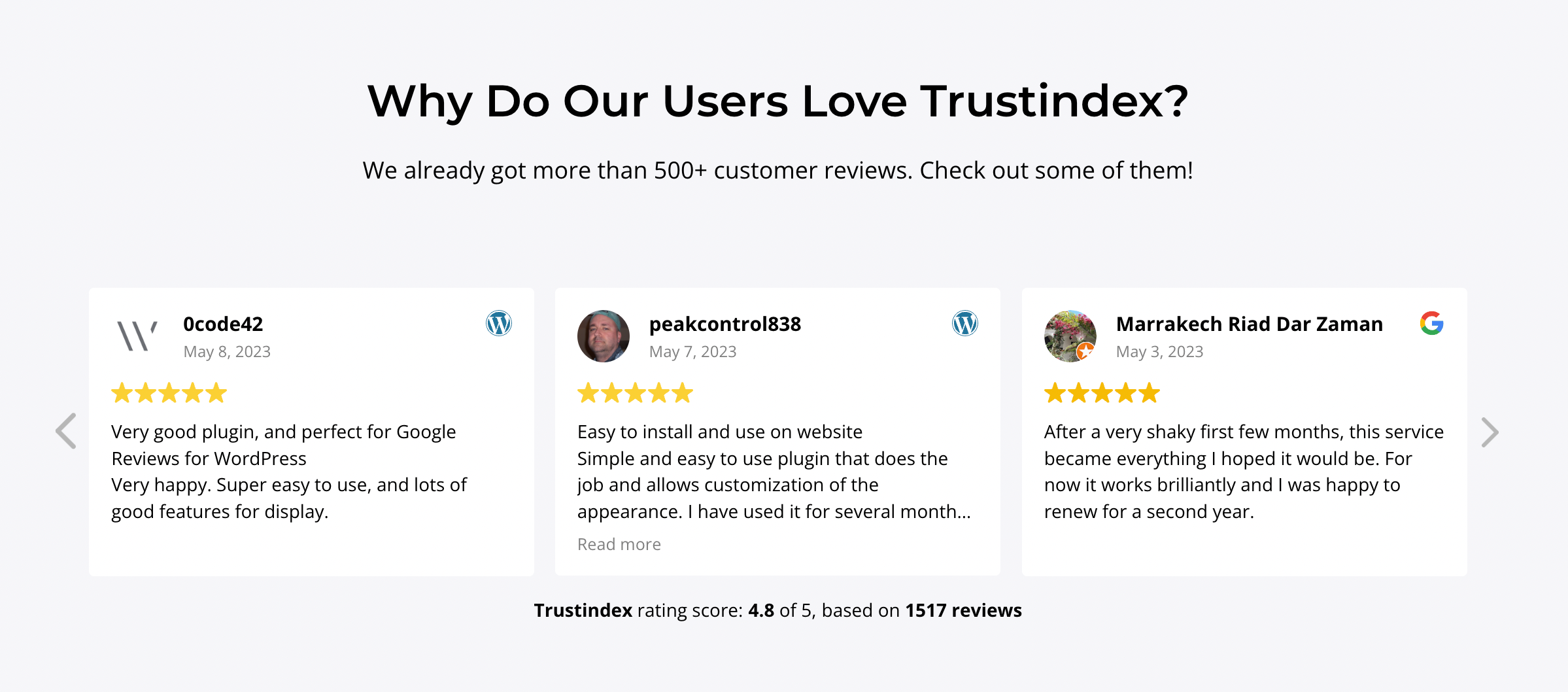- What Is Website Credibility?
- The Most Important Factors on a Website’s Credibility
- How to Improve Web Credibility?
- Tips to Create Credible Websites
- Conclusion
In today’s digital age, where information is abundant and competition is fierce, website credibility has become a critical factor in determining its success.
With countless options available at the click of a button, users seek trustworthy sources that provide reliable information, products, and services. Website credibility serves as the cornerstone of building trust and establishing authority in the online realm.
What Is Website Credibility?
Website credibility refers to the level of trustworthiness and reliability associated with a website. It is a measure of how credible or believable the information, services, or products presented on a website are perceived to be by its visitors.
Credibility is crucial because it influences users’ willingness to trust and engage with a website’s content or offerings.
What Are the Most Important Factors on a Website’s Credibility?
A site’s credibility is depending on various different factors, such as:
- Accurate and reliable information: Credible websites provide accurate, up-to-date information from reputable sources. They ensure that their content is well-researched, factually correct, and supported by evidence.
- Authoritative sources and expertise: Websites that are considered credible often cite authoritative sources, such as academic institutions, government organizations, or industry experts. The expertise and credentials of authors or contributors can also enhance credibility.
- Professional design and usability: A well-designed website with a professional appearance and intuitive navigation can instill trust in visitors. Attention to detail, user-friendly interfaces, and clear organization of content contribute to a positive user experience.
- Transparent and accessible information: Credible websites make their contact information readily available, including the organization’s name, physical address, email, and phone number. They also provide clear privacy policies, terms of service, and disclose any affiliations or conflicts of interest.
- Positive reputation and user feedback: Online reviews, testimonials, and ratings from other users can influence website credibility. A website that has received positive feedback, recommendations, or endorsements from reputable sources or users is more likely to be considered credible.
- Security measures: Websites that prioritize user safety and data protection are considered more credible. Implementing security measures such as SSL encryption, secure payment gateways, and clear privacy practices can enhance credibility and user trust.
How to Improve Web Credibility?
The credibility of your website plays a crucial role in determining its success.
- Earned Credibility: Your website gains credibility when visitors have positive experiences, such as finding helpful information, encountering minimal errors, receiving expert advice, and experiencing excellent customer service. When users perceive your website as credible and valuable, it contributes to its success.
- Reputed Credibility: Referrals from third parties, including friends, family, coworkers, or unbiased reviewers who have had positive experiences with your website, enhance its credibility. When people hear positive feedback about your website from trusted sources, it boosts its reputation and credibility.
- Presumed Credibility: Familiarity and assumptions also influence website credibility. If users have heard of your brand through various channels such as YouTube ads, guest posts on reputable platforms like Forbes, or interviews on popular podcasts like the Tim Ferriss show, it creates a presumption of credibility in their minds.
- Surface Credibility: Visitors form subjective opinions about your website based on various factors, including its design, trustworthiness, content quality, and ease of use. These impressions, whether positive or negative, significantly impact their decision to convert or engage further with your website.
The objective is to leverage these credibility factors to your advantage. Building and enhancing your website’s credibility is a powerful way to attract the desired results. To do so, you need to consider the following credibility factors and utilize them effectively:
- Provide accurate and reliable information to establish earned credibility.
- Encourage positive user experiences and collect testimonials to enhance reputed credibility.
- Utilize branding, marketing, and promotional efforts to establish presumed credibility.
- Focus on professional design, user-friendly interfaces, and high-quality content to create a positive surface credibility.
By strategically incorporating these credibility factors into your website, you can increase its trustworthiness, attract more visitors, and achieve the desired outcomes.
20 Tips to Create Credible Websites
Tip 1: Consistency is key
Consistency breeds trust in visitors. When you consistently implement the practices I’ve discussed in this article, it builds a strong reputation with your customers.
Tip 2: Ask for the essential
Requiring customers to register prior to posting a comment, initiating a live chat, or making a purchase diminishes trust.
Requesting customers’ phone numbers when only their name and email address are necessary creates resistance and undermines trust.
Tip 3: Have a FAQ section
Customers often have inquiries and concerns, and an FAQ section serves as a valuable resource to provide straightforward answers to some of their questions.
Many organizations tend to approach their FAQs as a subtle sales pitch. However, it is far more effective to prioritize being helpful, transparent, and truthful with each and every customer.

Tip 4: Fresh blog post, have an up-to-date blog
Consistently generating content demonstrates to visitors that your website is active and regularly updated. It also encourages them to revisit your site regularly, anticipating new content that can provide them with assistance.
Tip 5: Have useful experience
Your site visitors are constantly seeking high-quality content that addresses their problems, helps them achieve their goals, or offers entertainment. They crave expert-level content that is up-to-date, unexpected, and thorough.
Tip 6: Minimize advertising
Ads are widely disliked by people due to their intrusive and bothersome nature, as they constantly interrupt and appear ubiquitously.
To ensure a positive visitor experience, it is advisable to reduce the amount of advertising on your website, thus avoiding any negative impact or disruptions to your visitors.
Tip 7: Have a great customer service
Delivering exceptional service enhances the overall experience for website visitors, thereby enhancing earned credibility. When friendly and knowledgeable support representatives are available, it demonstrates the company’s expertise and efficiency to website visitors. It may be beneficial to incorporate a live chat option, making it convenient for your audience to engage with your website.

Tip 8: Credit your sources
By providing a reliable source, you enhance your trustworthiness. As customers develop increased trust in you over time, they will rely less on validating your sources. However, this trust can only be earned if you consistently cite your sources and offer evidence to substantiate your claims.
Tip 9: Client testimonials
Testimonials serve as social proof, providing visitors with insights into the minds of your customers. Through testimonials, visitors gain a glimpse into the customer experience, your operational approach, and other relevant aspects.
While it’s important to note that testimonials are inherently one-sided, they remain a powerful tool for establishing website credibility.
Tip 10: Customer reviews
Customer reviews and testimonials share a common purpose of allowing customers to provide feedback. However, reviews take it a step further by facilitating a conversation among customers, companies, and the wider community.

Positive reviews have the potential to significantly enhance credibility and even drive sales. It’s important not to be discouraged by a single negative review, as even negative feedback can hold value in terms of highlighting areas for improvement.
Tip 11: Case Studies
Case studies are commonly developed through a collaborative effort between the business and the customer. Customers provide insights into their challenges and expectations at the outset of the relationship, followed by sharing their experiences and the outcomes achieved.
Similar to testimonials, case studies are often presented from a one-sided perspective. Nonetheless, they significantly enhance credibility as customers willingly share their unique stories and experiences.
Tip 12: Connect with Influencers
Establishing credibility can be achieved through various means, ranging from extensive professional networks and partnerships with prominent organizations to simple associations with well-known local or niche influencers. Make sure you choose influencers who you consider as credible sources, the number of followers on their social media accounts is not the most important aspect.
Tip 13: Customer Validation
One effective method is showcasing your client list, highlighting the number of clients you have served, or demonstrating the industries in which your clients operate. When customers observe that their competitors or other trusted brands have chosen to work with you, it instills a greater sense of trust in your own brand.
Tip 14: External Validation
The utilization of phrases such as “As featured in,” “As seen on,” or “Used by” alongside the name of a reputable organization allows for the borrowing of trust and credibility from larger, more influential websites or organizations. This form of validation helps to establish a sense of trust and credibility in your own brand.
Tip 15: Awards
Incorporating awards can elevate your company’s reputation and bestow a sense of prestige. The impact of these awards on your profile increases with the prominence and significance of the recognition.
Nevertheless, it is crucial to consider the potential drawbacks of utilizing awards. If it is debatable that the awards are from credible sources, customers may raise doubts regarding your business, products, or services. It is important to prioritize aligning with reputable and esteemed awards to maintain trust and authenticity.
Tip 16: Advertising
When effectively utilized, advertising through platforms such as Google Ads, Facebook Ads, or YouTube Ads can establish presumed credibility through branding and familiarity. If visitors have encountered your brand before, it inherently enhances your credibility in their eyes. The mere act of recognition and familiarity breeds trust and contributes to a positive perception of your brand.
Tip 17: Branding
By leveraging psychological anchoring, a strong brand establishes a distinct position in the minds of customers, thereby cultivating credibility. Branding is the enduring element that persists over time, playing a vital role in building and maintaining trust and credibility.

Tip 18: Typography
Using larger fonts enhances reading speeds, allowing website visitors to comprehend content more effectively. Legible and clear typography is a fundamental aspect that should not be overlooked.
It’s important to remember that clarity should take precedence over persuasion. When website visitors can easily understand the message you are conveying to them, it becomes simpler to persuade them to take the desired action. By prioritizing clarity in your typography, you optimize the effectiveness of your persuasive efforts.
Tip 19: Simple content
When your content is easily comprehensible, it fosters a sense of familiarity. This familiarity, in turn, facilitates the decision-making process for visitors, making it easier for them to choose to make a purchase. By prioritizing clarity and ease of understanding, marketers can optimize the conversion potential of their content.
Tip 20: Grammar
Correct spelling and grammar play a significant role as they contribute to the initial impression customers form about your brand. While an occasional typo may not completely erode a source’s credibility, a consistent pattern of poor grammar and spelling mistakes can significantly impact it.
To maintain credibility, it is advisable to prioritize accuracy and consistency in your written content. Tools like Grammarly can be valuable resources in ensuring that your grammar remains in check and your content maintains a professional and polished appearance.

Conclusion
In conclusion, website credibility plays a pivotal role in shaping the success and reputation of an online presence. As visitors navigate the vast digital landscape, their trust and confidence in a website are paramount.
By focusing on factors such as accurate information, authoritative sources, professional design, transparent practices, positive reputation, and user feedback, website owners can establish and maintain credibility. Consistency in providing valuable content and a user-centric experience further strengthens trust and encourages repeat visits.
Building website credibility is an ongoing effort that requires continuous improvement and adaptation to meet the evolving needs and expectations of users. Ultimately, by prioritizing credibility, websites can foster strong connections with their audience, unlock new opportunities, and thrive in the competitive online environment.
FAQ
Website credibility is crucial as it influences visitors’ trust and willingness to engage with a website. A credible website is more likely to attract and retain users, encourage conversions, and build long-term relationships. Additionally, credibility contributes to the reputation and success of a website, distinguishing it from less reliable sources of information.
Yes, web design plays a significant role in website credibility. A professional and visually appealing design creates a positive first impression, instilling trust in visitors. It includes factors such as intuitive navigation, consistent branding, proper use of typography, and well-organized content. A cluttered or unprofessional design can raise doubts about a website’s credibility and negatively impact user experience.
User feedback, such as reviews, testimonials, and ratings, can greatly influence website credibility. Positive feedback from satisfied users serves as social proof, reinforcing the trustworthiness of the website. Conversely, negative feedback can raise concerns and erode credibility. Encouraging and responding to user feedback demonstrates a commitment to customer satisfaction and further enhances website credibility.
No, website credibility is an ongoing process. It requires continuous attention and effort to maintain and improve over time. Regularly updating content, monitoring user feedback, adapting to changing industry standards, and addressing any issues promptly are essential to sustain and enhance website credibility.



